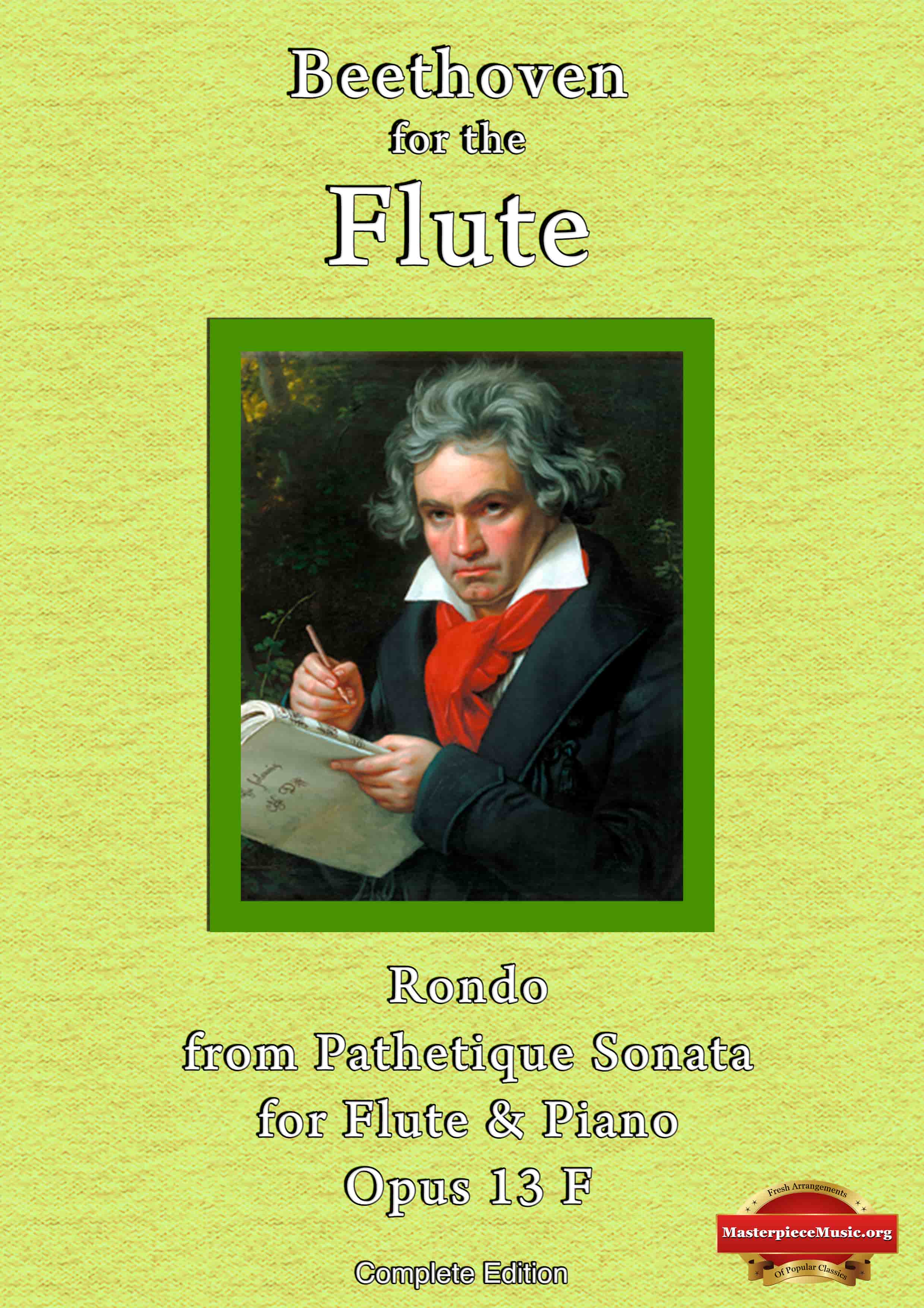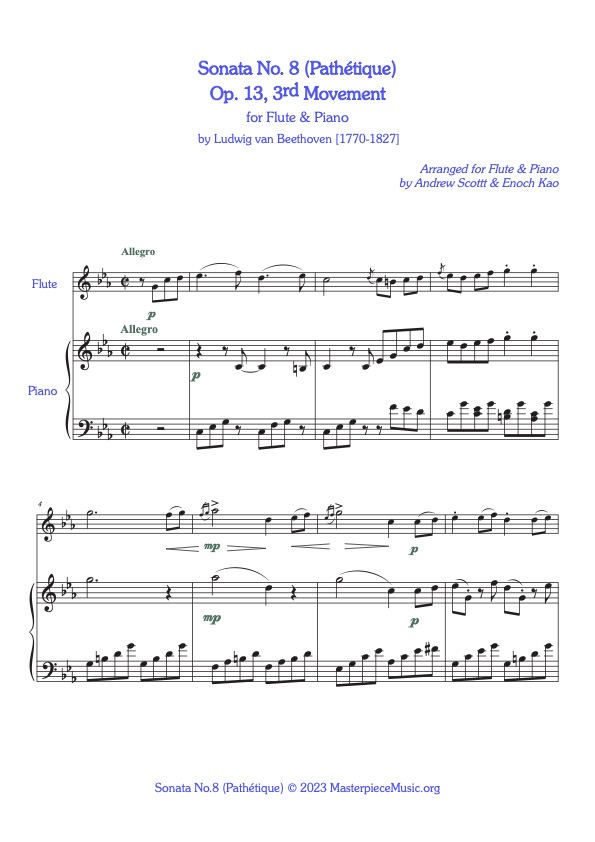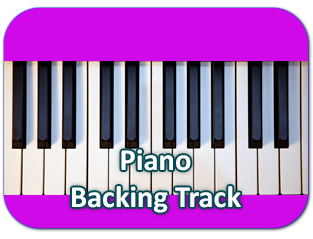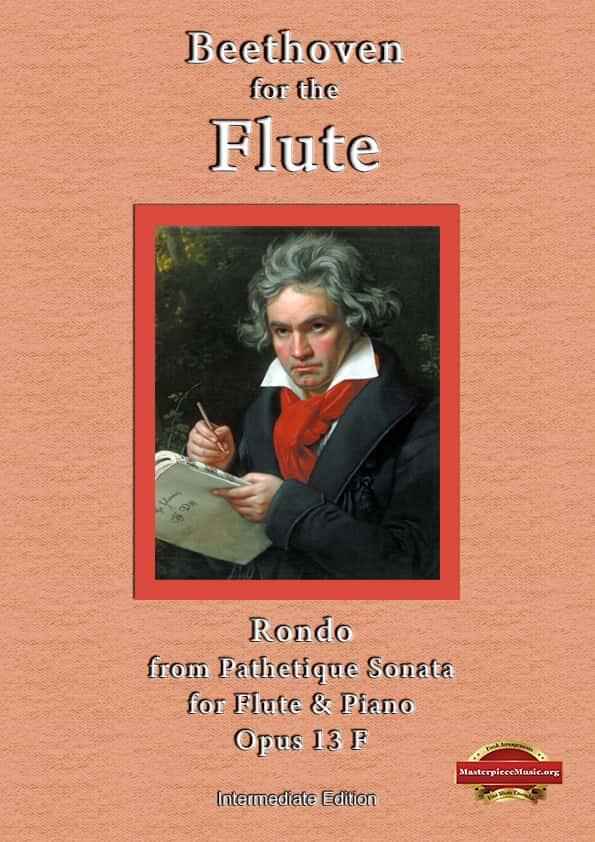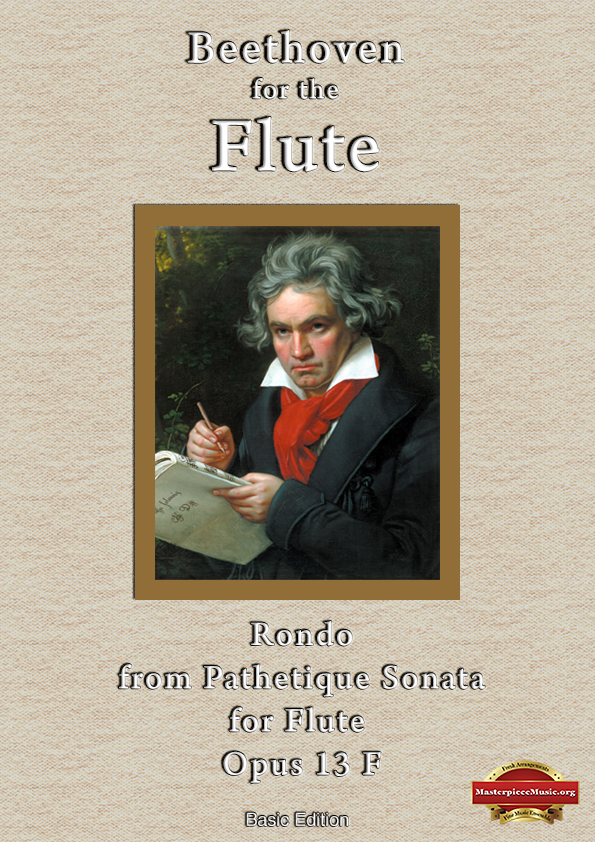The timeless brilliance of one of
Beethoven’s piano masterpieces
is now available for the flute.
Rondo from Pathetique Sonata
Beethoven Opus 13 – 3rd Movement
Sheet Music for Flute & Piano
Complete Edition
Click on the play button to hear

how this piece sounds.
Beethoven’s 8th Sonata in C minor, Op. 13, also known as the “Pathétique,” is one of Ludwig van Beethoven’s most famous and beloved compositions.
The sonata was composed in 1798 and dedicated to Beethoven’s friend and patron, Prince Karl von Lichnowsky.
The third movement of the “Pathétique” sonata is marked “Rondo: Allegro” and is written in sonata-rondo form. It begins with a lively and energetic theme in C minor, which is then contrasted by a more lyrical and introspective second theme in E-flat major.
The movement features virtuosic passages, particularly in triplets, rapid runs, and sudden dynamic changes that create a sense of drama and tension. Beethoven’s use of the pedal on the piano also creates a rich and full sound that fills the room.
One of the most notable features of the third movement of the “Pathétique” sonata is its use of silence. Beethoven inserts moments of complete silence throughout the piece, creating a sense of anticipation and tension that is released when the music resumes.
38 Pages
There are a total of 38 pages in this edition; the flute part is 7 pages, the piano part is 13 pages, the score is 18 pages.
This complete edition contains all 213 bars of the original composition, in the same key.
The playing time is about 5 minutes and 12 seconds, give or take, depending on how fast you can play.
The flute has about 80% of the melody; the piano provides rhythm and harmonic accompaniment all the way through, with the melody given to it about 20% of the time.
Low B Foot Joint advisable.
It will sound best if you play it on a flute with a low B foot joint, as there are a few low Bs in the piece.
If your flute only goes down to low C, you can play a low D instead of the B. This note will harmonize with the chord that the piano is playing.
This is a great piece for advanced players.
It presents an exquisite interplay between the two instruments, creating an enchanting atmosphere that will captivate both you and your audience alike.
Each note and dynamic marking has been faithfully transcribed, ensuring both an authentic and enhanced rendition of Beethoven’s original composition.
What you get:
1. Three separate parts of the complete edition as a PDF download – one part each for the flute and piano, and a third containing the score (both instruments on the page. This can be useful if either the flutist or the pianist needs to see what the other is doing):
2. A recording of the whole piece so you can hear how it should sound;
3. A backing track with just the piano, at full tempo, so you can practise at home;
Click the button to hear
 the piano backing.
the piano backing.
4. A backing track at 80% tempo, so you can practise the more difficult passages at a slower speed;
5. A backing track at 65% tempo, so you can practise the really difficult passages at a slower speed, for example bars 110-120.
